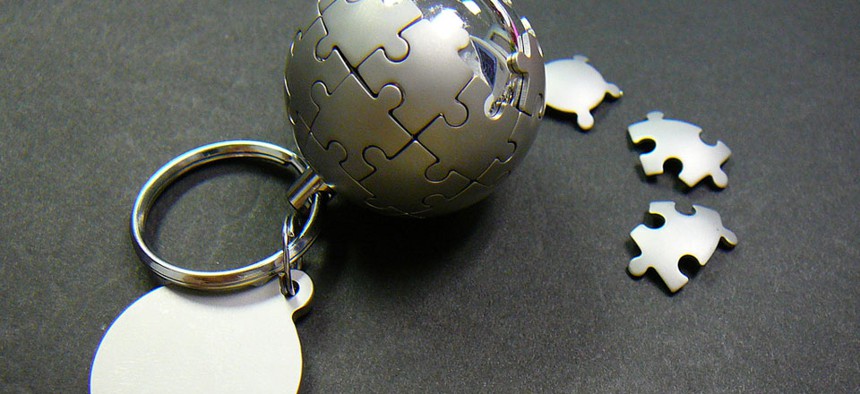90% of Wikipedia's Editors Are Male

Flickr user bastique
Here's what they're doing about it.
Wikipedia is like little else in history. Relied on by students, scholars, journalists, and citizens, it’s one of the top 10 websites in the world and the not-so-hidden base of much of our informational infrastructure.
It’s also the product of ridiculous inequality. To wit: It’s estimated that 90 percent of the encyclopedia’s top editors are male .
We’ve known gender has been a problem for Wikipedia for a while. (Diversity generally causes problems for the encyclopedia, as well: Non-Western male editors seem to be rare, too.) The gender gap has been why organizations like Brown University have organized edit-a-thons to add entries on women in science.
But a new story in the MIT Technology Review , by Tom Simonite, reveals how deeply concerned the organization charged with overseeing the encyclopedia is with the lack of new, female editors—and how the community that runs Wikipedia doesn’t always have those concerns in mind.
“The biggest issue is editor diversity,” a founder of the site, Jimmy Wales, tells Simonite. A member of the Wikimedia Board of Trustees, he wants the encyclopedia to “grow the number of editors in topics that need work.”
Those topics, it seems, fall into two categories: articles written mostly by women, and articles about the global south. As Simonite reports:
In 2011, researchers from the University of Minnesota and three other schools showed that articles worked on mostly by female editors—which presumably were more likely to be of interest to women—were significantly shorter than those worked on mostly by male editors or by men and women equally. Another 2011 study, from the University of Oxford, found that 84 percent of entries tagged with a location were about Europe or North America. Antarctica had more entries than any nation in Africa or South America.
The site’s problem isn’t just attracting and retaining women— it’s attracting and retaining any type of new user. Earlier this year, four researchers examined 2,100 new editors over the history of the website, grouped them into various categories, and looked to see whether they stuck around after their first set of edits. Specifically, they wanted to know about “good-faith” new users—users who had the right goals but didn’t quite get their first sets of edits right—and “golden” users—users with both the skills and ideals to immediately improve the encyclopedia.
This chart shows what they found:
Halfaker , et al.
In short: Since 2003, and especially during 2006, the number of workable editors who stuck around at the site tumbled, dropping below 20 percent. So far this decade, the proportion has seemed to drop even lower.
The Wikimedia Foundation, which stewards the encyclopedia, has tried a number of tactics to nudge that number back up. Maybe the most interesting of these is a “what-you-see-is-what-you-get” WYSIWYG editor, which sought to reduce the amount of jargony wiki-code new users would see. But the editors who run the site, and who impose steep regulations on those who hope to join, complained that the editor was buggy and pushed back. Now, new users won’t see the WYSIWYG editor by default.
Simonite unfolds the full story more comprehensively than any other account I’ve seen. His is an important, broad article on a system and body of knowledge that shapes the information that reaches us everyday, even if we’re not always aware of it.
( Image via Flickr user bastique )




